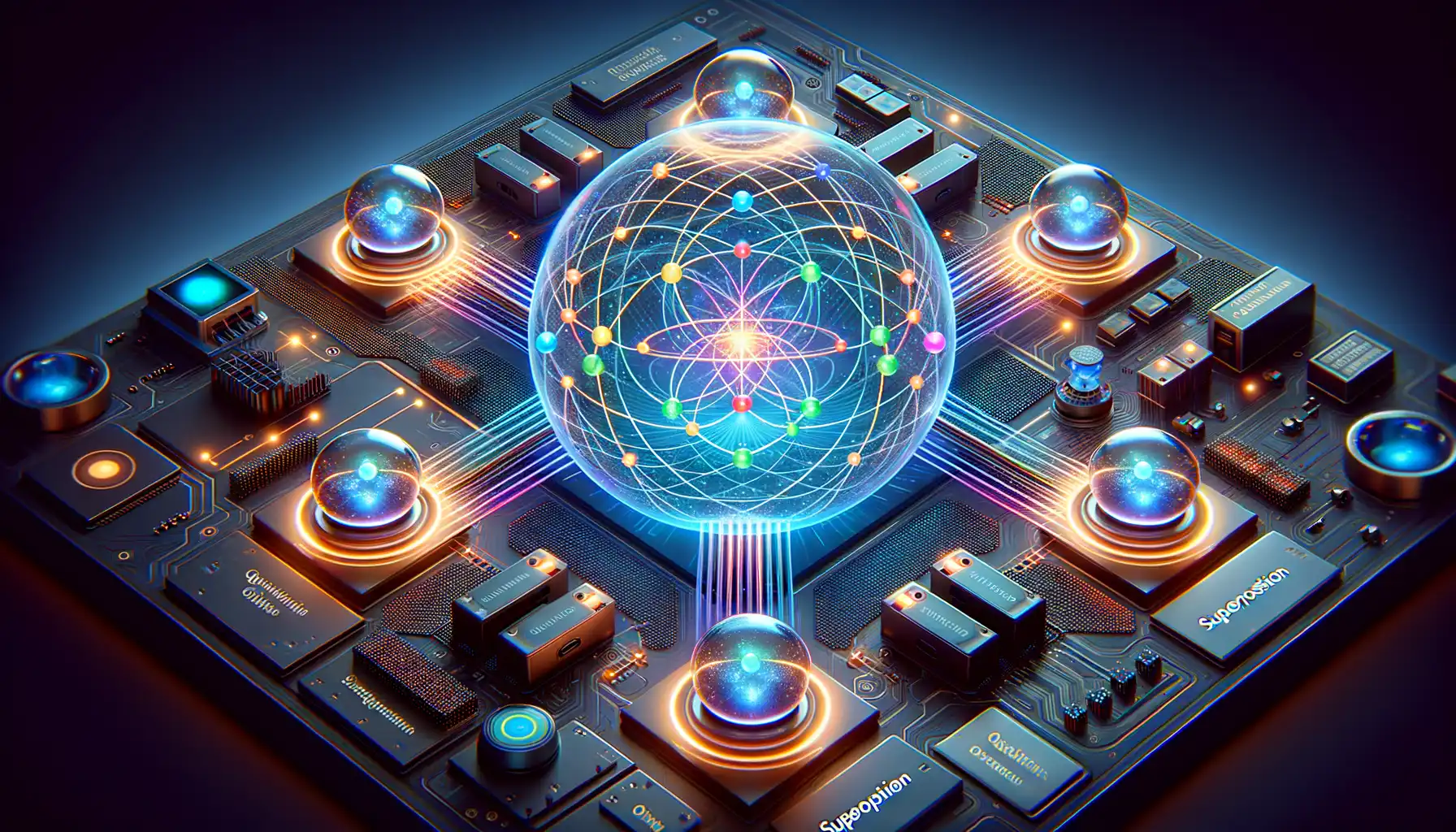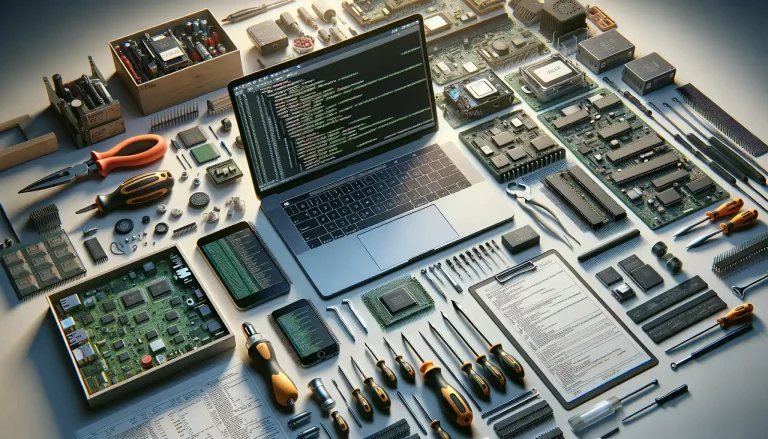Introduction to Quantum Computing
Imagine a world where the rules of everyday physics get tossed out the window, replaced by something stranger, almost magical. That’s the realm of quantum computing. But don’t worry—you don’t need a Ph.D. or a genius IQ to dip your toes into this incredible field. Let’s step in together. It’s going to be weird, but it’s going to be amazing.
The Unbelievable Foundations of Quantum Computing
Traditional computers? They’re like loyal soldiers following orders—processing 1s and 0s in neat sequences. But quantum computers? They’re more like jazz musicians, riffing off infinite possibilities in every note they play. Instead of bits, quantum computers use qubits that can exist as 1, 0, or even something in between—all at the same time. This phenomenon is called superposition, and it’s as mind-bending as it sounds.
Picture this: instead of opening one door at a time to search for treasure, as a classic computer would, a quantum computer opens *all* doors simultaneously. Thanks to concepts like entanglement (think of qubits as inseparable dance partners), quantum computers handle complexity with an elegance that feels almost supernatural.
Why Should You Care?
- They promise breakthroughs in fields like medicine and climate modeling.
- Quantum computing could revolutionize AI, unlocking smarter algorithms.
- It’s not just the future—it’s starting now, with giants like Google and IBM paving the way.
So buckle up! Quantum computing is reshaping what’s possible, and you don’t want to miss the ride.
Key Concepts in Quantum Mechanics Relevant to Computation

The Quantum Playground: Superposition and Entanglement
Welcome to the quantum playground, where reality bends in unexpected ways. First up: superposition. Imagine you’re flipping a coin – heads or tails, right? Not in the quantum world! A quantum bit (or qubit) can be in a blend of both states simultaneously, like Schrödinger’s cat being alive and dead at once. This ability to hold many possibilities at the same time is why quantum computers are so powerful: they can explore a vast number of solutions at lightning speed.
And then, there’s entanglement—the cosmic dance of connected particles. When two qubits are entangled, their states are linked, no matter how far apart they are (yes, even if one’s on Mars!). Change one, and the other shifts instantly. Einstein famously called this “spooky action at a distance,” but for quantum computing, it’s more like magic.
Wave-Particle Duality and Quantum Tunneling: Nature’s Whimsical Rules
Ever heard of wave-particle duality? Picture light as both a particle and a wave – a personality switch depending on who’s asking. In quantum computation, this “dual nature” supports the creation of qubits that don’t just compute; they flow, adapt, and defy classical boundaries.
Now, let’s talk about quantum tunneling. Think of a tiny mouse squeezing through seemingly solid walls. That’s a particle ignoring energy barriers and jumping to another side. Quantum tunneling allows electrons to defy logic, making futuristic tech like quantum gates possible.
- Superposition: The multitasker of the quantum world.
- Entanglement: An invisible bond that powers quantum communication.
- Tunneling: The Houdini act of escaping barriers.
Quantum mechanics isn’t just science—it’s like stepping into a surreal dreamscape where the rules shift beneath your feet. And yet, it all comes together to make quantum computing an exhilarating frontier.
How Quantum Computers Work

The Quantum Building Blocks: Qubits and Superpositions
Imagine if your computer wasn’t limited to flipping tiny switches between 0 and 1. That’s where quantum computers steal the show. Instead of bits, they use qubits, which don’t just sit at 0 or 1—they exist in beautifully strange combinations of both, thanks to something magical called superposition.
Picture this: you’re flipping a coin. A classical bit is like looking at the coin once it lands—it’s either heads or tails. A qubit is like watching the coin spin mid-air, existing as heads AND tails simultaneously. This unlocks an entirely new dimension of processing power by letting quantum computers explore countless possibilities all at once!
Entanglement: The Cosmic Dance
Now, let’s talk about another quantum phenomenon that sounds like it came straight from a sci-fi script: entanglement. When qubits become entangled, their states are linked instantly, no matter the distance between them. Change one, and you instantaneously change the other—it’s like they’re whispering secrets faster than the speed of light.
Here’s where it gets wild:
- Entangled qubits allow quantum computers to perform tasks that’d take classical computers millennia to accomplish.
- This “spooky action” turbocharges problem-solving by orchestrating intricate patterns of information sharing.
It’s like a perfectly synchronized dance, choreographed across the universe. Mind-blowing, isn’t it?
Applications and Potential Impact of Quantum Computing

Revolutionizing Industries: Real-World Uses of Quantum Computing
Picture this: you’re navigating a labyrinthine maze, searching for the shortest path. A classical computer takes it step by step, testing every route, while a quantum computer leaps through walls, finding the solution in moments. This seemingly magical ability has the potential to disrupt industries across the globe.
Consider drug discovery. Today’s methods involve painstakingly testing millions of molecular combinations. With quantum computing, these calculations — which mimic and predict chemical interactions at an atomic level — could be done exponentially faster. Suddenly, finding cures for complex diseases becomes less needle-in-a-haystack and more laser-guided.
Then there’s optimization, the unsung hero of everyday life. Airlines planning routes, logistics giants mapping supply chains, or financial firms tweaking portfolios — all use optimization. Enter quantum algorithms, offering solutions so efficient they make yesterday’s supercomputers look like relics of another age.
- Secure communication systems using quantum cryptography, virtually impenetrable to hackers.
- Hyper-personalized AI models trained at a pace never before possible.
- Accelerating breakthroughs in climate modeling and renewable energy innovation.
We’re not just on the cusp of change; we’re teetering on the edge of a revolution. What will quantum computing reimagine next?
Challenges and the Future of Quantum Computing

The Growing Pains of Quantum Power
Quantum computing is, in many ways, like trying to build a sandcastle during high tide. The potential is stunning—vast, intricate, and unlike anything we’ve ever seen. But keeping it all steady? That’s where things get messy. One of the biggest hurdles is the notorious fragility of quantum bits, or qubits. These delicate building blocks need an environment that borders on perfection: ultra-cool temperatures, near-zero noise, and isolation from stray vibrations. Turn up the heat—even slightly—and your qubits collapse faster than a house of cards.
Then, there’s the matter of error correction. Unlike classical computers, which can double-check themselves with ease, quantum systems are prone to making mistakes. To “fix” these errors requires layers of additional qubits, which significantly inflates the complexity of an already challenging technology.
- Scalability: Creating machines large enough to solve meaningful problems is still a Herculean task.
- High costs: Maintaining quantum environments demands cutting-edge (and expensive) infrastructure.
- Algorithms: We’re still in the early days of figuring out how to fully exploit quantum’s mind-bending power.
Peering Into Tomorrow’s Quantum Horizon
So, what does the future hold? Imagine breakthroughs that shrink quantum systems into something practical, akin to compressing room-sized 1950s computers into today’s slim laptops. Researchers are exploring materials like topological qubits, designed for robustness, or hybrid models that combine the strengths of classical and quantum computing into a harmonious super-system.
And let’s not forget the ethical tightrope we’ll need to walk. As quantum leaps forward, concerns about security and cracks in modern cryptographic systems creep into view. Will quantum encryption evolve fast enough to protect sensitive data? The race is on, and it’s as thrilling as it is daunting.



